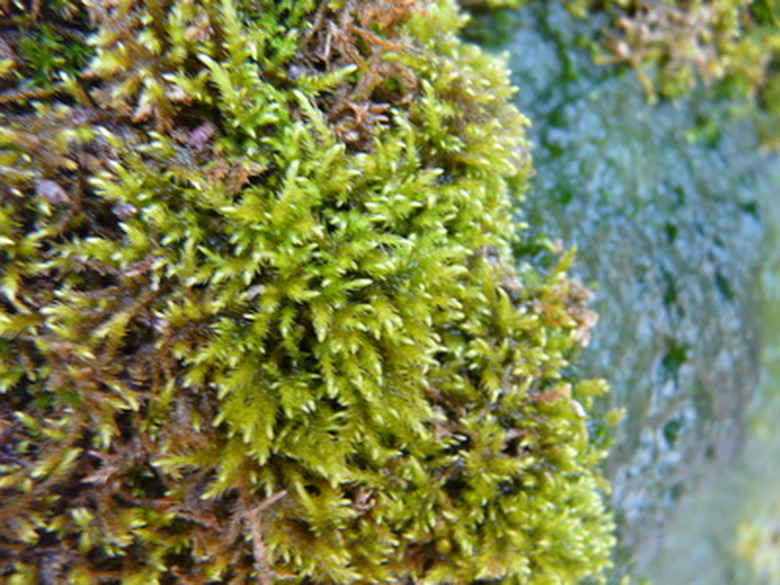Examples Of Plants Without Seeds
Non-flowering plants do not produce seeds; rather they reproduce in alternative ways, such as producing spores. Often they are generally called "seedless plants" in botany to differentiate them from common trees and garden plants that usually display flowers, fruits and seeds. Plants that are gymnosperms and angiosperms can also produce exceptional plants that will not produce seeds because of gender or genetic mutation, such as from hybridization, which causes their flowers to be sterile and not produce seeds.
Bryophytes
The term "bryophyte" is a botanical word used to group all plants that lack a vascular system and do not flower and thus produce seeds. The vascular tissues allow for transport of water, food and nutrients across all parts of the plant organism. Spores are formed on these plants, and moisture in the form of dew, mist or rainfall facilitate the fusion of sex gametes to create new individual plants. Prime examples of bryophytes are mosses and liverworts.
- Non-flowering plants do not produce seeds; rather they reproduce in alternative ways, such as producing spores.
- Plants that are gymnosperms and angiosperms can also produce exceptional plants that will not produce seeds because of gender or genetic mutation, such as from hybridization, which causes their flowers to be sterile and not produce seeds.
Lycophytes
Lycophytes are primitive, simple plants that also do not flower and produce seeds but do have vascular tissues, unlike the bryophtyes. Lycophytes, such as club mosses, reproduce via spores. Two examples are the plant genus Lycopodium and genus Selaginella.
Pterophytes
More advanced than lycophytes are the vascular plants called pterophytes, which assume a physicality many people would associate as being a "plant." Whisk ferns, woodland ferns and horsetails are examples of pterophytes, which do not flower and set seed but rely on spores for sexual reproduction.
Male-Gendered Flowering Plants
The more advanced plants that do either flower or produce cones to yield seeds can include individual plant specimens that will not yield seeds–male-gendered plants, those that only produce male flowers. Many cycads have either male or female plants, and only female plants can produce seeds. Hollies often have differently sexed plants, too, and male holly shrubs and trees will not produce fruits and seeds even though they produce little blossoms. Another example is the ginkgo: male trees never produce the fleshy and smelly fruits that house the seeds.
- Lycophytes are primitive, simple plants that also do not flower and produce seeds but do have vascular tissues, unlike the bryophtyes.
- Whisk ferns, woodland ferns and horsetails are examples of pterophytes, which do not flower and set seed but rely on spores for sexual reproduction.
Sterile Flowering Plants
Genetic mutations or manipulation by humans on flowering plants can also lead to plants that are sterile–the flowers are malformed, are not produced or are incompatible and physically cannot produce seeds. From a horticultural standpoint, a seedless plant can be preferred, such as a seedless or sterile tree that doesn't drop messy seeds on a road or patio, or a seedless vegetable or fruit that is more easily eaten. Examples include a seedless grapefruit, seedless cucumber or seedless grape.
References
- "A-Z Encyclopedia of Garden Plants"; Christopher Brickell and H. Marc Cathey, eds.; 2004
